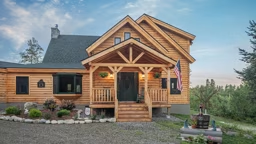
Pipe Docks
Typically the least costly option, pipe docks are comprised of a run of decking perhaps 3 to 5 feet wide attached to pipes that rest underwater on the lakebed.Pros: This lightweight dock is easy to remove; in fact, it won't hold up to icy northern winters unless you take it out of the water. It's also friendlier to aquatic life than other dock types; its thin pipes and open sides admit plenty of light for underwater plants and won't interfere significantly with the shoreline. Also, because of its slight profile a pipe dock doesn't get bounced around by choppy water.
Cons: Its thinness has a down side: it can't provide a strong shield for your boat, which will absorb the wake that runs past the dock. So, pipe docks are best for small boats. If you have a bigger vessel that needs better protection, consider a more substantial type of dock.
Floating Docks
This deck rides on Styrofoam or polyethylene foam blocks that simply raise and lower with the flow.Pros: Easy and relatively inexpensive to build, floating docks work on most shorelines as well as in open water.
Cons: Floating docks require a good 3 feet of draft underneath. They can bounce around in waves or the wakes of passing boats. Also, the mass of a floating dock can block sunlight, causing harm to aquatic plants. If you make the dock bigger to improve stability, even more damage can be done to life underneath.
Permanent Docks
These run the gamut from concrete piers to platforms on pilings sunk deep into the lake bottom. The most common is the crib dock, essentially a wooden box filled with rocks, for lakes where the depth is 25 feet or less.Pros: The 10 to 50 tons of stone that go into a crib make for a strong dock that will accommodate add-ons, such as boathouses, and the dock will stand up to water movement.
Cons: Because of its size, a closed crib is not one of the friendliest types from an environmental standpoint. In places with strong environmental controls, dock builders have amended their designs to create a more open structure that allows fish to swim through. The amount of rock needed adds significantly to the cost and may not be cost-effective if your property is so far from rock quarries that shipping becomes a factor.











